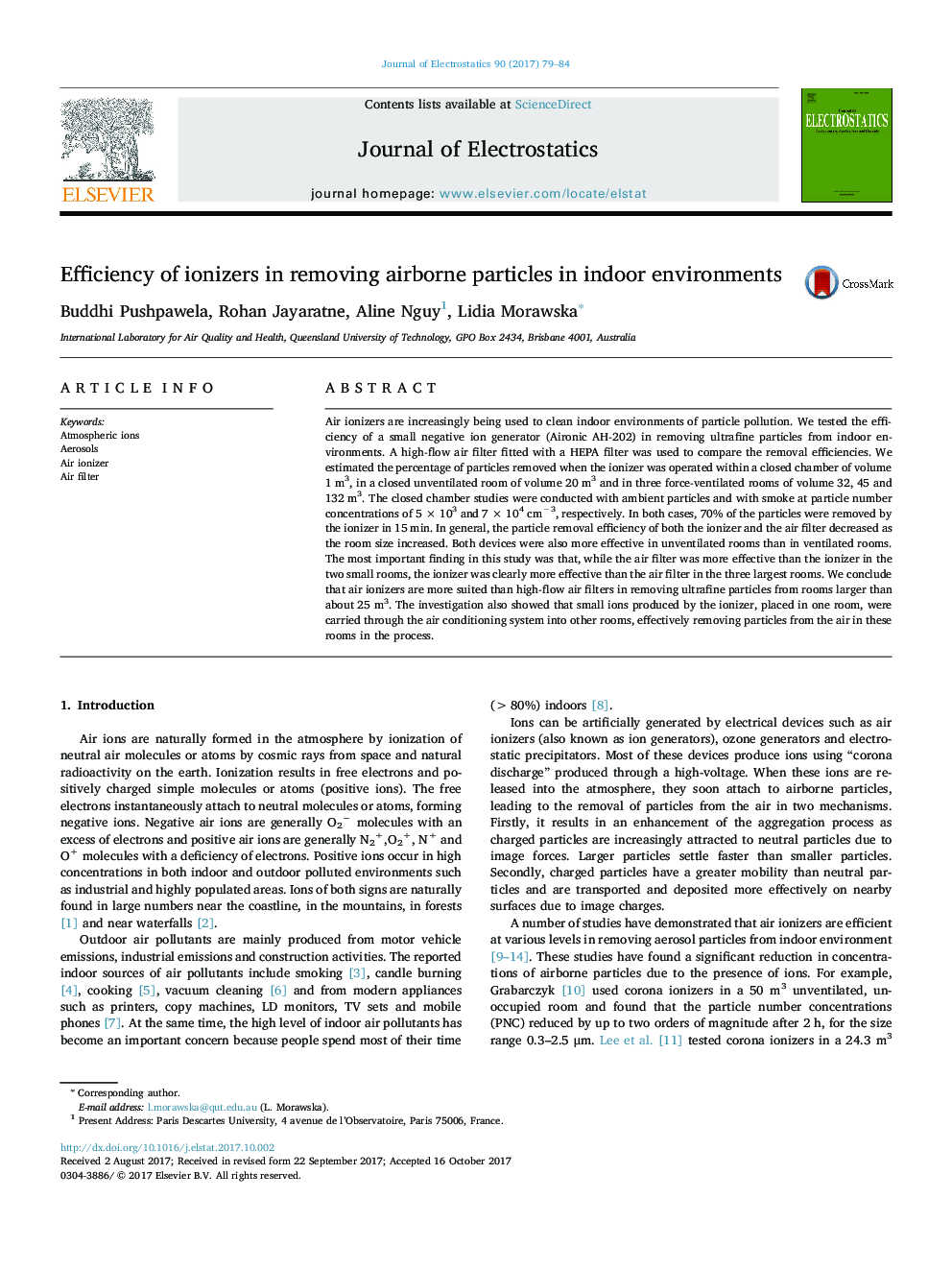| Article ID | Journal | Published Year | Pages | File Type |
|---|---|---|---|---|
| 7117182 | Journal of Electrostatics | 2017 | 6 Pages |
Abstract
Air ionizers are increasingly being used to clean indoor environments of particle pollution. We tested the efficiency of a small negative ion generator (Aironic AH-202) in removing ultrafine particles from indoor environments. A high-flow air filter fitted with a HEPA filter was used to compare the removal efficiencies. We estimated the percentage of particles removed when the ionizer was operated within a closed chamber of volume 1Â m3, in a closed unventilated room of volume 20Â m3 and in three force-ventilated rooms of volume 32, 45 and 132Â m3. The closed chamber studies were conducted with ambient particles and with smoke at particle number concentrations of 5Â ÃÂ 103 and 7Â ÃÂ 104Â cmâ3, respectively. In both cases, 70% of the particles were removed by the ionizer in 15Â min. In general, the particle removal efficiency of both the ionizer and the air filter decreased as the room size increased. Both devices were also more effective in unventilated rooms than in ventilated rooms. The most important finding in this study was that, while the air filter was more effective than the ionizer in the two small rooms, the ionizer was clearly more effective than the air filter in the three largest rooms. We conclude that air ionizers are more suited than high-flow air filters in removing ultrafine particles from rooms larger than about 25Â m3. The investigation also showed that small ions produced by the ionizer, placed in one room, were carried through the air conditioning system into other rooms, effectively removing particles from the air in these rooms in the process.
Keywords
Related Topics
Physical Sciences and Engineering
Engineering
Electrical and Electronic Engineering
Authors
Buddhi Pushpawela, Rohan Jayaratne, Aline Nguy, Lidia Morawska,
